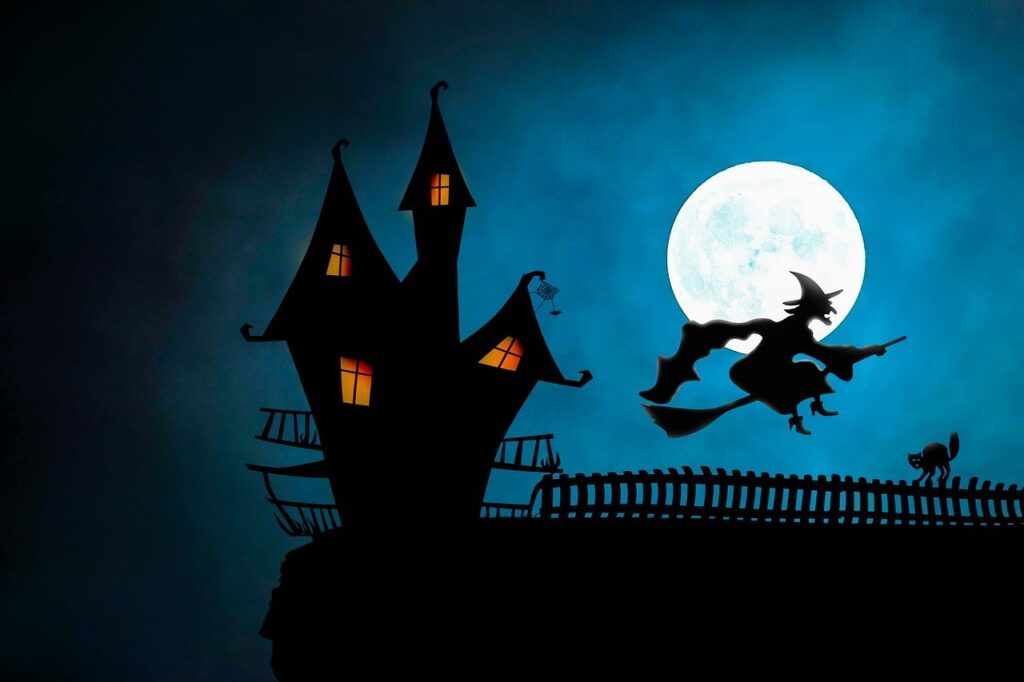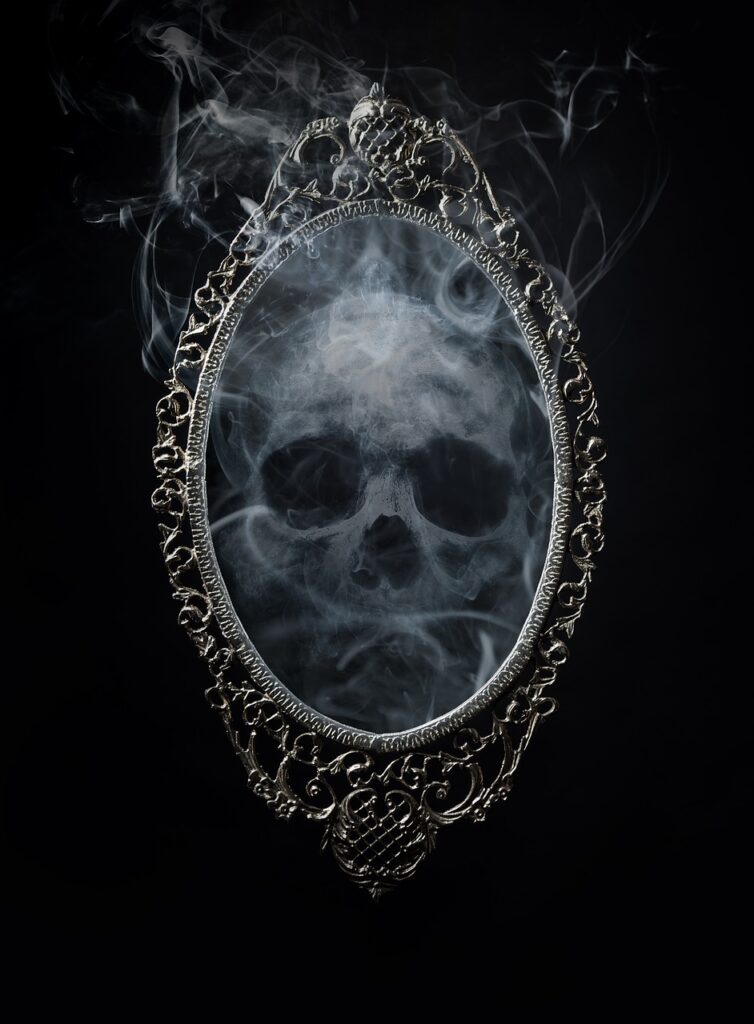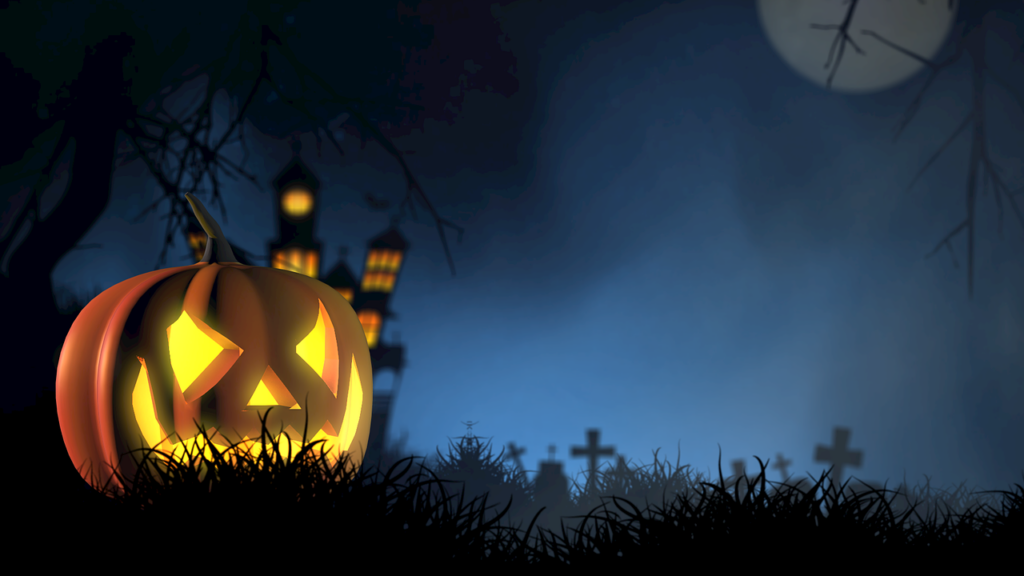Bonfires, Bones and Broomsticks: The Pagan Sweep of Halloween Revelries
Guess what? This article is all about Halloween and how it started a long, long time ago with people who were called Pagans. They liked to dance around big fires, play with fake bones, and fly on pretend broomsticks. This may sound like the Halloween fun and games you know, but the truth is, it all started from these strange and exciting Pagan parties. Let’s get ready to uncover the mystery behind “Bonfires, Bones and Broomsticks: The Pagan Sweep of Halloween Revelries!”

This image is property of pixabay.com.
Bonfires and Bones: Unveiling Halloween’s Ancestral Roots
Halloween is a holiday that you and your friends may look forward to all year long. It’s a day filled with costumes, candy, and lots of fun. But have you ever thought about where all these Halloween traditions come from? Let’s go on a journey to discover the ancient roots of this spooky celebration.
Exploration of Celtic Samhain Festival
Long before people dressed up in costumes and went from door to door for candy, the ancient Celtic people held a festival called Samhain. This festival marked the end of the harvest season and the beginning of winter. So, in a way, it was their New Year’s Eve. But it was also believed to be the time of year when the veil between the living and the dead was at its thinnest.
Connection between bonfires and the celebration of death
At the Samhain festival, the Celts lit large bonfires. These fires were not just for warmth and light. They were an essential part of the festival, believed to help protect the living from harmful spirits. The flames, smoke, and ashes were all thought to have protective and cleansing powers. Just like how you clean your room sometimes to feel good and safe, they used bonfires to make everything feel good and safe.
Significance of bones in Samhain rituals
Isn’t it really strange that bones are often linked to Halloween? Well, during Samhain, after animals were sacrificed as offerings, their bones were often thrown into the bonfires, giving the celebration its nickname, “bonefire.” These bones were a symbol of the life that was given to the spirits and gods to keep them happy and peaceful.
The Rise of Witches and Broomsticks
Moving from bonfires and bones, let’s now talk about witches and broomsticks, which are often seen at Halloween.
Role of witches in Samhain
The Celts believed that not just spirits, but also witches, fairies, and elves existed, and they became part of Samhain stories and rituals. People even dressed up as these beings during the festival, very much like the costumes we wear on Halloween. Witches, with their magical powers, became iconic figures of the holiday.
Symbolism of broomsticks in pagan assets
You might wonder, why do the witches ride broomsticks? Well, the broom was a symbol of cleansing and protection. It was used to sweep away evil spirits and negativity. So, the witches’ broomsticks are not just for flying, but also for keeping nasty spirits away.
The transformation of the witch image over the centuries
Over the years, the image of the witch has changed a lot. Early witch illustrations show them as ugly and old women. But nowadays, a witch can look like anything – a little girl, a pretty woman, even a boy!

This image is property of pixabay.com.
Jack-O’-Lanterns: Not Just a Pretty Face
Next, we travel into the world of glowing pumpkins with spooky faces – the famous Jack-o’-Lanterns.
Origin story of the jack-o’-lantern
The story of the Jack-o’-lantern goes back to an old Irish tale about a man named Stingy Jack, who tricked the devil and ended up wandering the afterlife with a lantern. To scare away Stingy Jack and other spirits, people in Ireland and Scotland would carve faces into turnips and potatoes and place a flame inside, creating the first Jack-o’-lanterns.
Significance of carving faces into pumpkins
The carved faces in Jack-o’-lanterns were thought to scare off evil spirits. They also served as a light source to guide helpful spirits to their homes.
How jack-o’-lanterns are used in modern Halloween celebrations
Fast forward many years, Jack-o’-lanterns still play a huge role in Halloween. However, pumpkins have replaced turnips and potatoes. Today, carving pumpkins into Jack-o’-lanterns has become a fun art activity during Halloween. We place them outside our homes, serving as decorations and welcoming signs for trick-or-treaters.
Costumes, Candy, and the Art of Trick-or-Treating
While we’re on the topic of trick-or-treating, let’s see how this tradition started.
The practice of ‘guising’ or ‘mumming’ in Samhain
During Samhain, people wore costumes and went from house to house, singing songs or reciting verses in exchange for food. This tradition, known as ‘guising’ or ‘mumming,’ is the ancestor of the modern trick-or-treating.
Shift from tricks to treats
Over time, tricks were replaced by treats, especially candies. This shift probably happened because giving out candies was a kind and fun way to celebrate the holiday.
Modern commercial significance of Halloween costumes and candy
Today, Halloween costumes and candy have become big business. Every year, there are so many different costumes to choose from and so much candy to enjoy. It’s a special time when you can become your favorite character and satisfy your sweet tooth.

This image is property of pixabay.com.
Spooky Specters and Halloween Hauntings
Now let’s delve into the ghostly aspect of Halloween – all those spooky specters and eerie hauntings.
Belief in the supernatural during Samhain
Remember the Celts thought that the veil between the living and the dead was very thin during Samhain. They believed the spirits of the dead returned to visit the living. This belief in the supernatural is the root of the ghostly side of Halloween.
How the concept of ghosts morphed through the ages
Initially, these returning spirits were not feared but welcomed as they were family members returning for a visit. But over time, the perception of these spirits changed, and they became something to be scared of – just like the ghosts we know today.
Evidence of the superstitious influence on Halloween celebrations
Many Halloween traditions show the influence of these old superstitions. For example, we wear scary costumes to blend in with the spirits, and we leave treats out for them, much like the food offerings made during Samhain.
Ancient Superstitions and Modern Mischief
For our next stop, let’s look at how Halloween got its mischievous side.
Shaping of Halloween rituals through old beliefs
Many Halloween customs, like trick-or-treating, bobbing for apples, and carving Jack-o’-lanterns, originated from ancient superstitions. For example, bobbing for apples started as a fortune-telling game in which the first person to bite into an apple floating in water would be the next one to marry.
Evolution from religious observance to secular celebration
Halloween has evolved from a religious holiday observed by the Celts to a fun-filled, secular celebration named trick-or-treating, costume parties, and so on, and so forth. Even though some of the traditions have changed, they still relate back to those ancient beliefs and festivals.
Influence of superstitions on Halloween pranks and mischief
Superstitions and beliefs also played a role in Halloween’s more mischief-styled traditions. Pranks and jokes became popular ways to celebrate Halloween. Today, toilet papering houses and prank scares have become Halloween night staples.
Legends and Lore: The Halloween Mythos
Let’s now dive into the stories, legends, and mythologies that are attached to Halloween.
Origins of popular Halloween legends
Many popular Halloween legends, like the Headless Horseman or the Candyman, have their origins in old myths and tales. These stories have been passed down through the ages and continue to be part of Halloween lore.
Role of stories and myth in shaping Halloween traditions
Stories and myths play a crucial role in shaping Halloween traditions. They explain why we carve Jack-o’-lanterns, why we wear costumes, and why Halloween is a time of ghosts and other supernatural beings.
How Halloween lore continues to evolve
Over time, Halloween lore continues to evolve and incorporate new stories and traditions. When you go trick-or-treating or attend a Halloween party, you are adding your own story to the rich tapestry of Halloween lore.
How Christianity Shaped All Hallow’s Eve
Christianity also played a role in shaping the Halloween as we know it today.
Church’s attempt to replace Samhain with All Saints’ Day
Around the 700s, the Christian Church decided that November 1 should be All Saints’ Day, a day to remember all the saints and martyrs. The night before, which fell on the same day as Samhain, became known as All Hallows’ Eve, later shortened to Halloween.
Incorporation of pagan elements into Christian observances
While the Church tried to change Samhain into a Christian holiday, many pagan traditions were still incorporated. For example, bonfires and costumes, which were originally part of Samhain, started to become part of All Hallow’s Eve celebrations as well.
Continued controversy over Halloween’s religious significance
Even today, there is a debate about the religious significance of Halloween. Some view it as a harmless day of fun, while others see it as a celebration with pagan or even satanic roots.
Halloween Around the World: A Global Phenomenon
Finally, let’s take a quick trip around the globe to see how different cultures celebrate Halloween.
Comparisons of Halloween customs across different cultures
In different parts of the world, Halloween customs vary. In Mexico, for example, there’s the Day of the Dead, where families remember their loved ones with feasts and colorful decorations. In some parts of Europe, kids go ‘trick or treating’ with turnips rather than pumpkins.
Impact of American Halloween traditions on global celebrations
American Halloween traditions, such as parties, costumes, and trick-or-treating, have influenced other cultures’ celebrations. Around the world, you can find kids dressing up and asking for candy just like they do here in the U.S.
Continued influence of pagan elements in worldwide observances
Even though Halloween is celebrated in many parts of the world, the pagan roots of Halloween continue to influence these celebrations. Bonfires, costumes, and even the belief in spirits come from those ancient festivals like Samhain.
The Halloween Junkie Take
So why do we love Halloween so much? Halloween gives us the chance to step out of our everyday lives and become someone (or something) entirely different. Whether you want to be a superhero, a dinosaur, or a fairy, on Halloween, you can be anything you dream of.
Why Halloween continues to be a beloved tradition
The excitement of dressing up, collecting candy, and experiencing the thrill of a spooky-yet-fun night keeps Halloween alive in our hearts. Regardless of how old you are, Halloween allows you to embrace your imagination and enjoy a night full of adventure and magic.
The undeniable influence of its pagan roots
Knowing the history behind Halloween makes the holiday even more fascinating. Those bonfires, costumes, Jack-o’-lanterns, and even the pranks have ancient roots that connect us with people who lived a long, long time ago. It’s a sort of magical time warp, isn’t it?
Celebrating Halloween: A tribute to the ghosts of its past?
So, when you are celebrating Halloween, remember you are not just collecting candies or wearing costumes. You are also celebrating a rich and diverse history that takes us back over 2000 years. So carve those pumpkins, don those costumes and trick-or-treat with gusto – it’s not only a tribute to the fun of the present but also a nod to the past. As for the future? Who knows what fantastic new Halloween traditions will be conjured up for the Halloween junkies of tomorrow!
Bonfires, Bones and Broomsticks: The Pagan Sweep of Halloween Revelries Read More »

